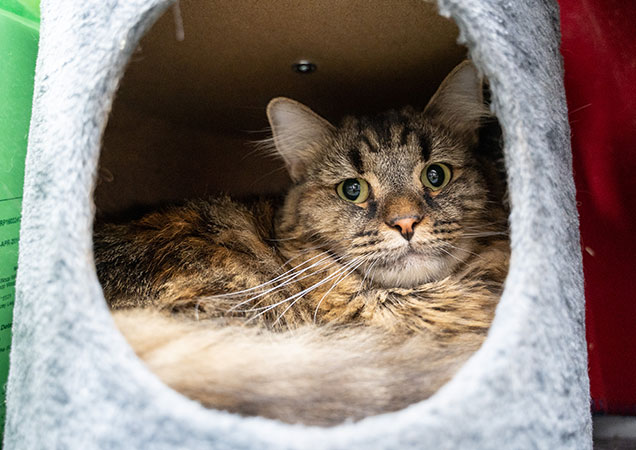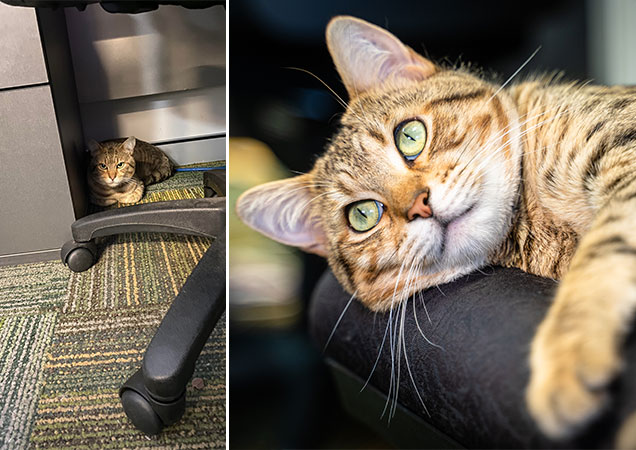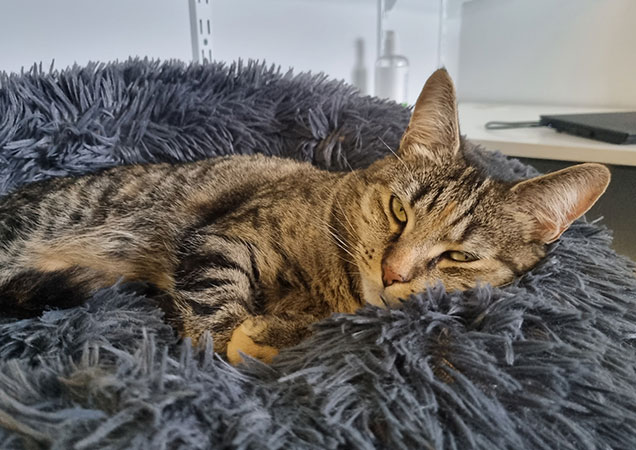If you have a multi-cat household, exchange bedding between your cats, so that they can start to get used to the smell of each other before meeting.
After about a week of separate lives, you can try limited interaction under a door between your new cat and existing cats.
You can begin to allow your new cat access to more of your house. In multi-cat households, do this when your existing cats are in a different part of the house. Also, allow your existing cats to explore the room where your new cat has been.
After two weeks, this is an ideal time for your felines to meet, but remember, every cat is an individual and may need longer. Bring your new cat in a carrier into the area where your existing cat is. Tip: Feed both cats during this short interaction to help reduce stress.
Continue doing this over an extended period, moving your existing cat’s bowl closer to the cat carrier each time. When your cats are eating happily side-by-side, you can try short supervised direct interactions between your new and existing cats. All going well you can then gradually increase their supervised time together.






